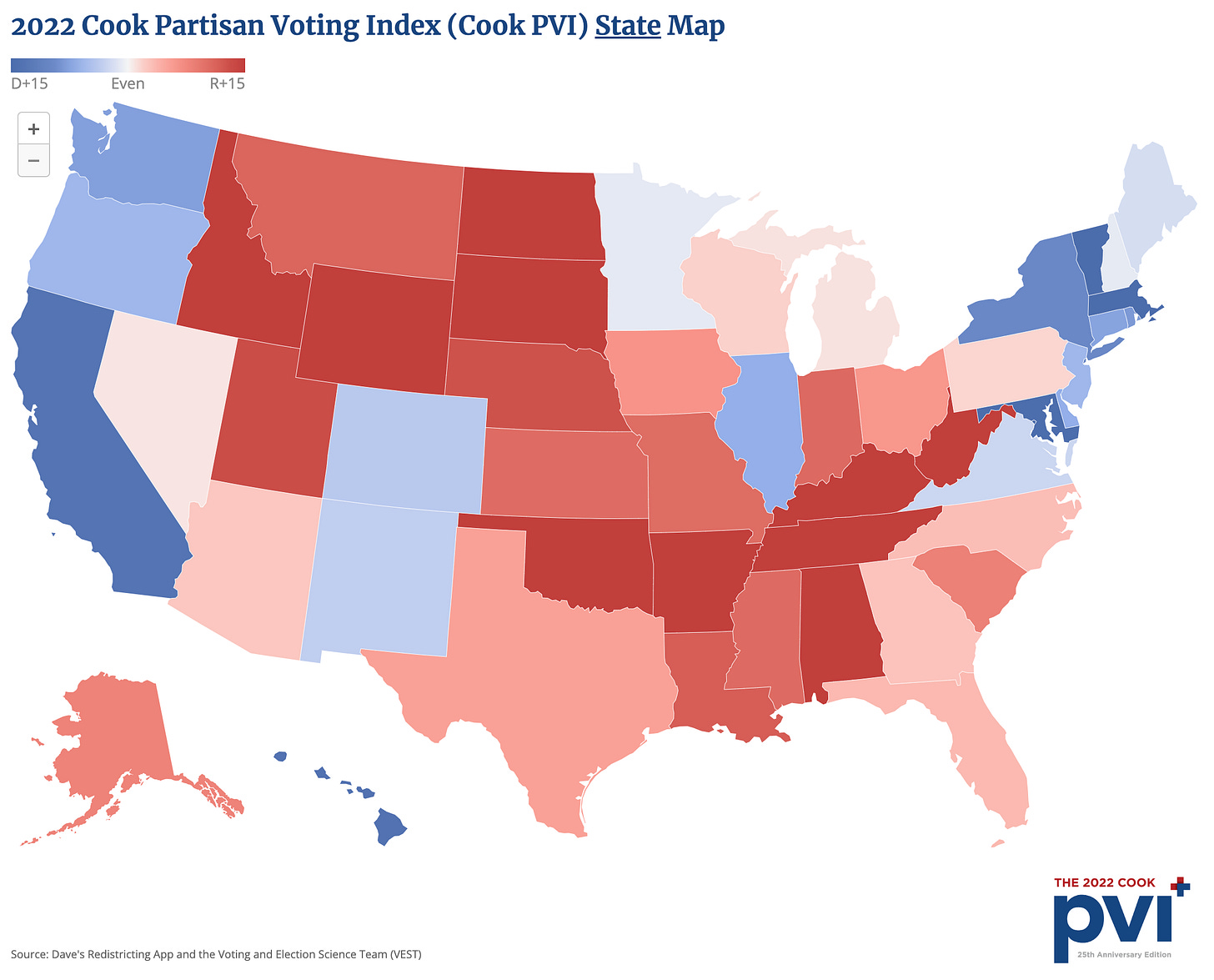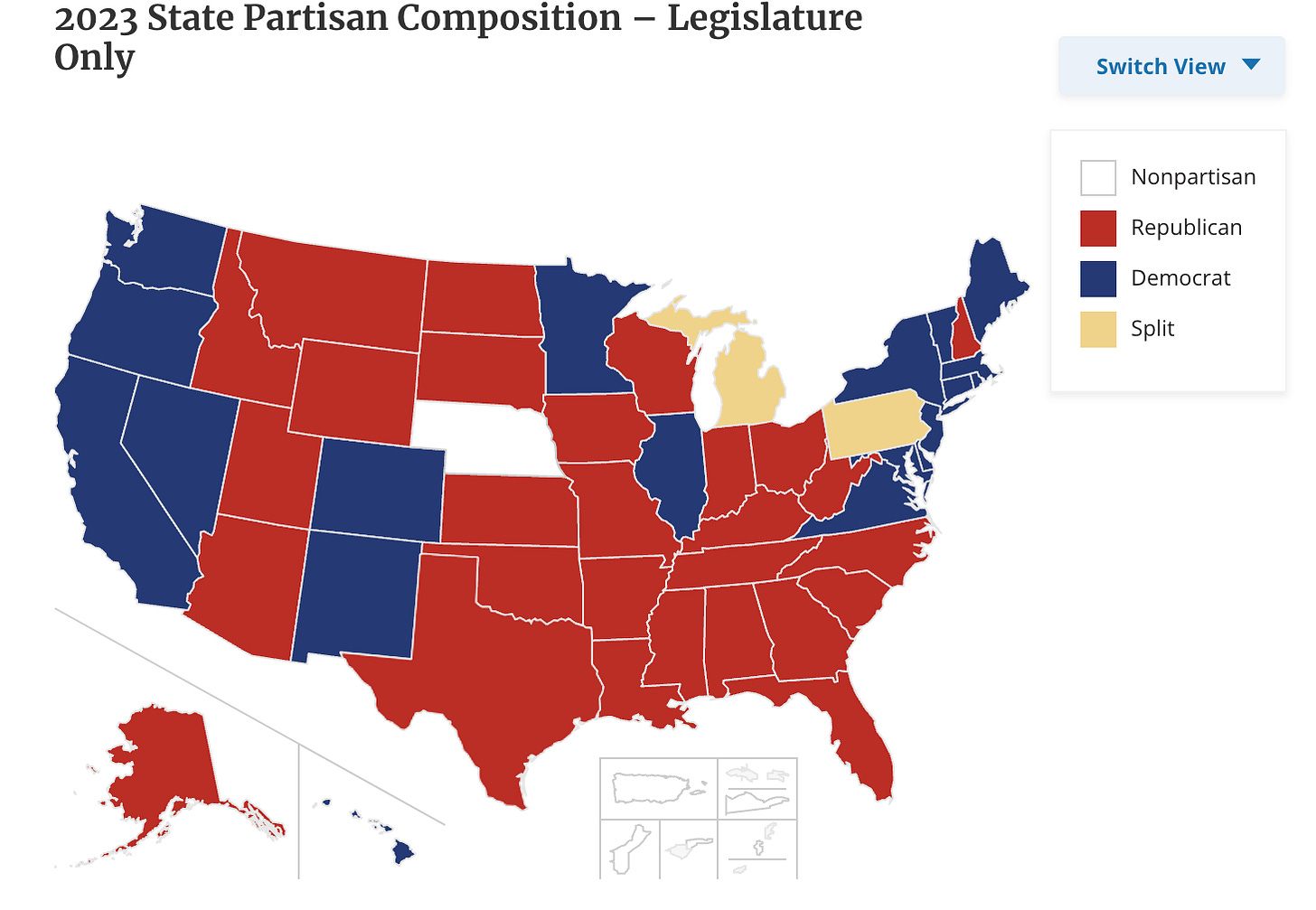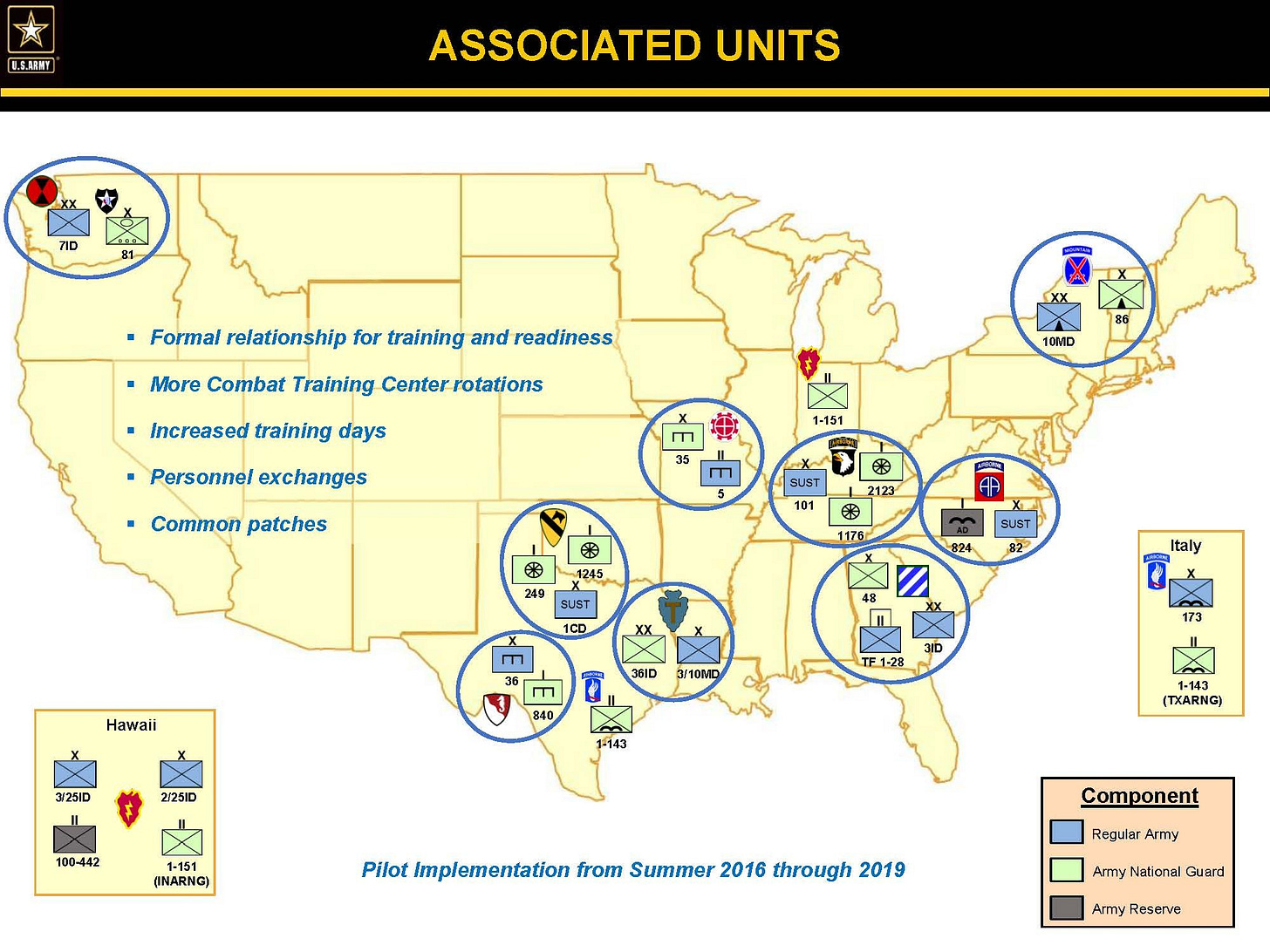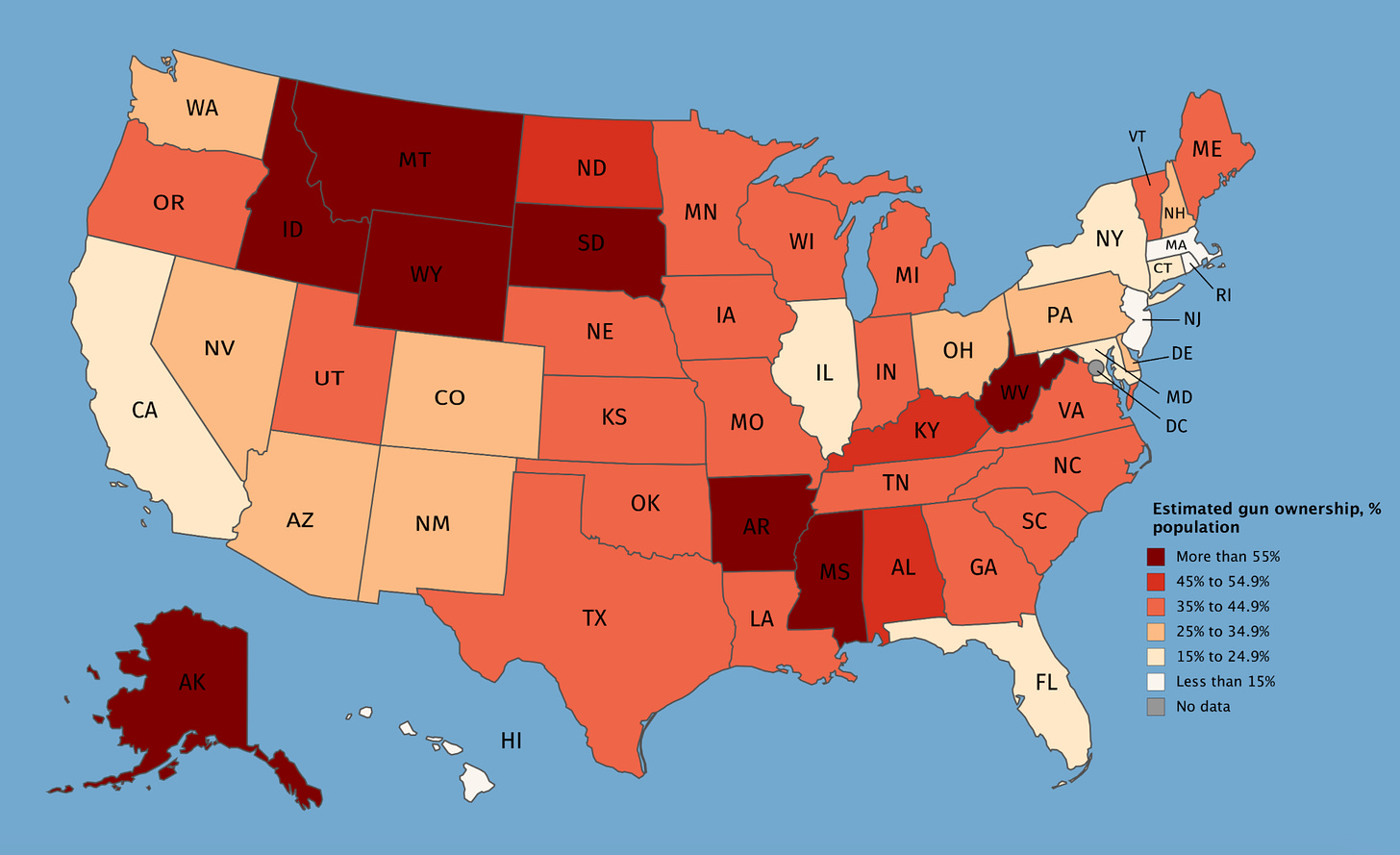The following is not an endorsement of any action or a prediction of the future. I have already posted an article explaining why I think an American Divorce is a really bad idea, and greater federalism offers us a way out of our current partisan divide.
This article is just an interesting scenario that I thought of. Think of it as Alternate History, except that is about the immediate future, not the past.
You have probably heard that a movie on a future American Civil War is coming out in 2024. Social media is already buzzing on how realistic it is. It got me thinking if it came to national secession, how could we do it with a minimal amount of violence? Perhaps something closer to a Velvet Divorce of Czechoslovakia in 1992 that narrowly avoids a bloody civil war.
The recent confrontation between the US Customs and Border Protection and the Texas National Guard got me to move up the publication debate.
So here goes..
Triggering Event
It is the year 2025. President Joe Biden has narrowly won re-election for President and election returns are disputed by Republicans in several key swing states. For Republicans, this is the final straw.
Or maybe it is February 2024 and the confrontation between the US Customs and Border Protection and the Texas National Guard gets violent.
It is time for secession!
Imaginary Timeline
In January 2025 (or Feb 2024), the Texas state legislature votes to secede from the United States. However, rather than creating a new nation an independent state of Texas, Texas declares itself the “Free United States of America.” The Texas state legislature claims themselves to be “the real” United States of America, while the current federal government is declared illegitimate and unconstitutional.
The “Free United States of America” maintains exactly the same:
Federal laws
Constitution
Flag
National anthem
Military
etc (i.e. it is a carbon copy of the original United States of America)
Caught off guard by the sudden declaration, the federal government in Washington D.C. is divided in how to respond. The President decides to wait and see what happens rather than start a bloody Civil war.
The “Free United States of America” establishes a new temporary federal capital within Texas borders.
The Texas state legislature invokes Article V of the U.S. Constitution to call a Convention of the States to propose new amendments to the Constitution. Since Texas is the only state in the “Free United States of America,” it makes up more than the necessary three-fourths of all states to do so.
The Texas state legislature calls on the voters of Texas to elect representatives to the Convention of the States.
Within a few weeks Texas voters elect a very conservative delegation to the convention. Being the only state in the “Free United States of America,” they can propose amendments to the U.S. Constitution.
The Convention of the States proposes the following amendments to the US Constitution:
Balanced budget
Term limits on all federal elected officials and bureaucrats.
Transfer of all domestic powers to the states.
Gives the majority of states the ability to nullify any federal laws, executive orders, or regulations over domestic affairs.
Prohibits children of non-citizens from receiving birthright citizenship.
Prohibits non-citizens from voting or counting towards population for purposes of reapportionment.
Repeals the 16th Amendment giving federal power to tax income.
The amendments to the U.S. Constitution are rapidly passed by the Texas state legislature (the only state in the “Free United States of America,” so it meets the “three-fourths” of states needed to amend the U.S. Constitution).
Texas then invites other states to join the “Free United States of America.” To do so, Texas requires all new states must ratify all new amendments. This is much the same as was done to readmit the former Confederate states back into the Union after the Reconstruction.
One-by-one, all the Republican-majority states join the “Free United States of America” and ratify the new amendments. Only the Democratic states on the Pacific coast and Northeast states remain in the old USA.
The federal government in Washington D.C. realizes that it has been totally out-maneuvered, so it agrees to not start a Civil War. It enters into diplomatic negotiations to divvy up the U.S. military.
The end result is the vast majority of states join the “Free United States of America.” By June 2025, there are two nations, where once there was one.
Each of the two nations rapidly implements its partisan agenda:
The old USA implements sweeping social and economic reforms to create a Scandinavian-style welfare state. Voters rejoice.
The Free USA massively cuts federal spending, taxes, and regulations and allows states to do their own thing. Voters rejoice.
Could there be a clean separation without violence? Of course, this is all speculation about something that will probably not happen, but I think the answer is Yes.
Here are a few maps. Notice that except for a few areas, it is a pretty easy choice for each state. The following are roughly aligned:
Geography
Voter partisanship
Partisan control of state legislature (which is the key variable as all power in the Constitution not vested in the federal government is given to state legislatures).
Partisanship of U.S. Congressional delegation
Partisanship of state Governors (although I am not clear how much constitutional power they would have in this situation compared to the state legislatures)
Here is a map of Red states and Blues states based on 2022. You can interact with it here.
Here is another map by county:
Here is a map of control of partisan control of state legislatures in 2023 (from NCSL):
Here is a map that includes Governors in 2023 (from NCSL):
The major issues that might derail a peaceful “Velvet Divorce” would be:
The West Coast and Northeast are cut in two. This likely undercuts their negotiating power.
A few states will have to make some tough choices:
New Mexico
Colorado (mainly because of the Denver metro area)
Illinois (mainly because of the Chicago metro area)
Minnesota (mainly because of the Minneapolis/St. Paul metro area)
Georgia (mainly because of the Atlanta metro area)
Virginia (mainly because of the suburbs of the DC metro area)
Maybe a few Red states that temporarily have a Democratic governor.
Who controls the U.S. military?
Who can be citizens in the two new nations?
I think the latter two questions can be resolved around something like this:
After heated negotiations, the US military is divided up as follows:
The old USA and Free USA establish joint control over the:
US Navy
US Coast Guard
US Space Command.
The Free USA gets control over the (mainly because the old USA realizes that it will not be able to recruit enough soldiers to man units):
US Army
US Marine Corps
US Air Force.
All US citizens as of Jan 1, 2020 (i.e. before Biden took office), are allowed to relocate to the nation of their choice by the end of 2025, but non-citizens are not. A mass migration between the two nations ensues.
All migration of non-citizens and American citizens after 2025 requires following immigration rules established by the new nation.
Loyalty of the Military
In all revolutionary situations, the loyalty of the security services is the key variable in which side wins. Other than the southeast, Texas has the heaviest concentration of U.S. ground forces in the Continental United States. The decisions that these units make will largely determine the outcome of any confrontation. The power of the people is limited if all the security services align on one side.
Note: I had problems finding a good map with the locations of US Army units. The map above is the best that I could find. The US Marine Corps divisions are:
1st Marine division in California,
2nd Marine division in North Carolina
3rd Marine division in Okinawa, Japan
In the case of Texas, it is:
Local police in Texas
Texas Rangers (state police)
Texas Army National Guard (the largest National Guard in the Union with 21,000 troops, including the 36th Infantry division and multiple Special Forces units)
US Army units based in Texas:
US Army North headquarters, which commands all US Army units in Continental USA
US Army South headquarters, which commands all US Army units in Latin America
First Army Division West headquarters, which commands all US Army units west of the Mississippi river
III Armored Corps headquarters, which commands all armored units based in the Continental USA
1st Calvary division in Fort Cavazos (previously Fort Hood)
US Air Force units based in Texas (there are no US Marine bases in Texas and US Navy bases will likely not have much impact on the outcome)
If most or all of the above military units are loyal to Texas, there is little the federal government can do other than launch an extremely bloody civil war. It is not even clear that the Joint Chiefs of Staff will be willing to allow this to happen. I believe that they will urge the President to use caution and seek a diplomatic solution rather than have their beloved military destroyed by infighting.
Notice that except for US naval bases, the vast majority of US military bases are in the Red States and personnel is dominated by conservatives. The best result for Democrats is that they stay neutral and that is being very optimistic.
And the same goes for National Guard units:
And differences are even more extreme for gun ownership by private citizens:
So that is my “What If?” scenario. As far as I know, no one has ever even thought about this scenario. As far as I know, this entire scenario does not violate the actual wording of the U.S. Constitution.
Can anyone spot a gap in the logic?
The key to making all this happen peacefully is:
The Texas state legislature moves very fast, so the federal government in Washington D.C. does not have time to react in a coordinated way (this was very similar to the real American Civil War).
Rather than establishing a new nation, as the Confederates did, the Texas state legislature declares itself the only legitimate United States and stays fully within the powers vested in the states by the U.S. Constitution.
This gives very little room to maneuver for the federal government in Washington D.C and keeps the National Divorce peaceful.












If a state legislature somehow convinced itself to suddenly vote for secession, I think there would just be shock and it would be viewed as illegitimate even within that state. The President would declare the vote illegal, federalize the state National Guard, and order the arrest of the governor and key instigators. His orders would be followed (though some politicians in question might flee the country successfully), and there would be no violent resistance. If tested by SCOTUS, it would approve of the President's actions in a 9-0 vote, as the illegality of unilateral secession is considered settled law.
Think of something like Catalonia's attempt to declare independence from Spain in 2017, which wasn't even all that sudden, there had been a years-long buildup and multiple referenda, but it was suppressed without resistance.
If secession or national divorce were to actually happen in the US, it almost certainly wouldn't be sudden. It would be thoroughly discussed as a serious idea for years or decades. Presidential candidates and potential SCOTUS justices would be asked their opinion on the matter, etc.
How do you divide the $34+ trillion of national debt?
Does the 'Free" US do away with the Federal Reserve or re-constitute their own version?
How are the federalized "entitlements" such as Social Security and Medicare handled for "free" citizens? I don't think those funds can be split between old and new, as all of that money's been spent on other things.
Who is President of the "Free" US? The Texas governor? And how about as each state joins the "free" republic? The joining states have had no say in leadership. A future election day will have to be promised for the future once the re-organization settles down.
Some tough questions, but a great thought experiment. I've always tried to "think the unthinkable" when solving problems. I like what you've done.